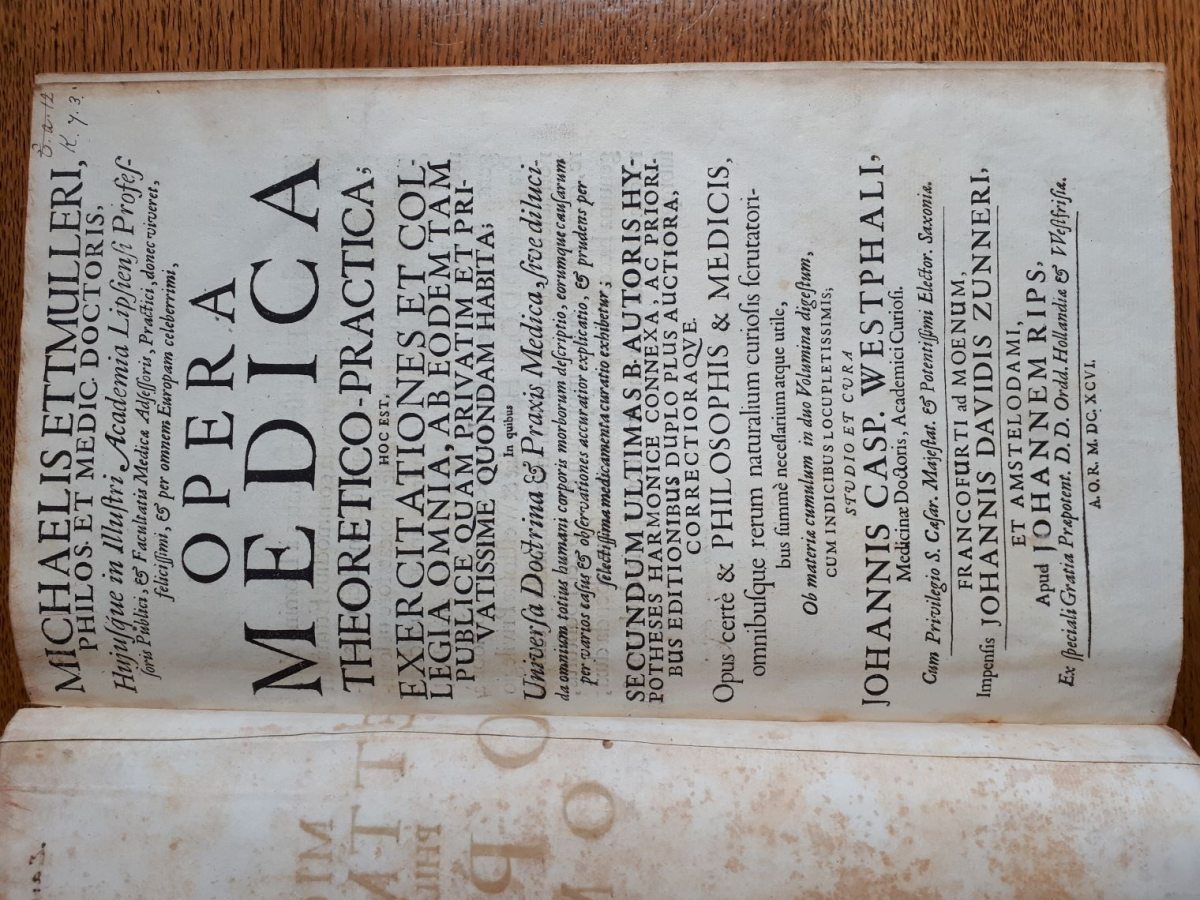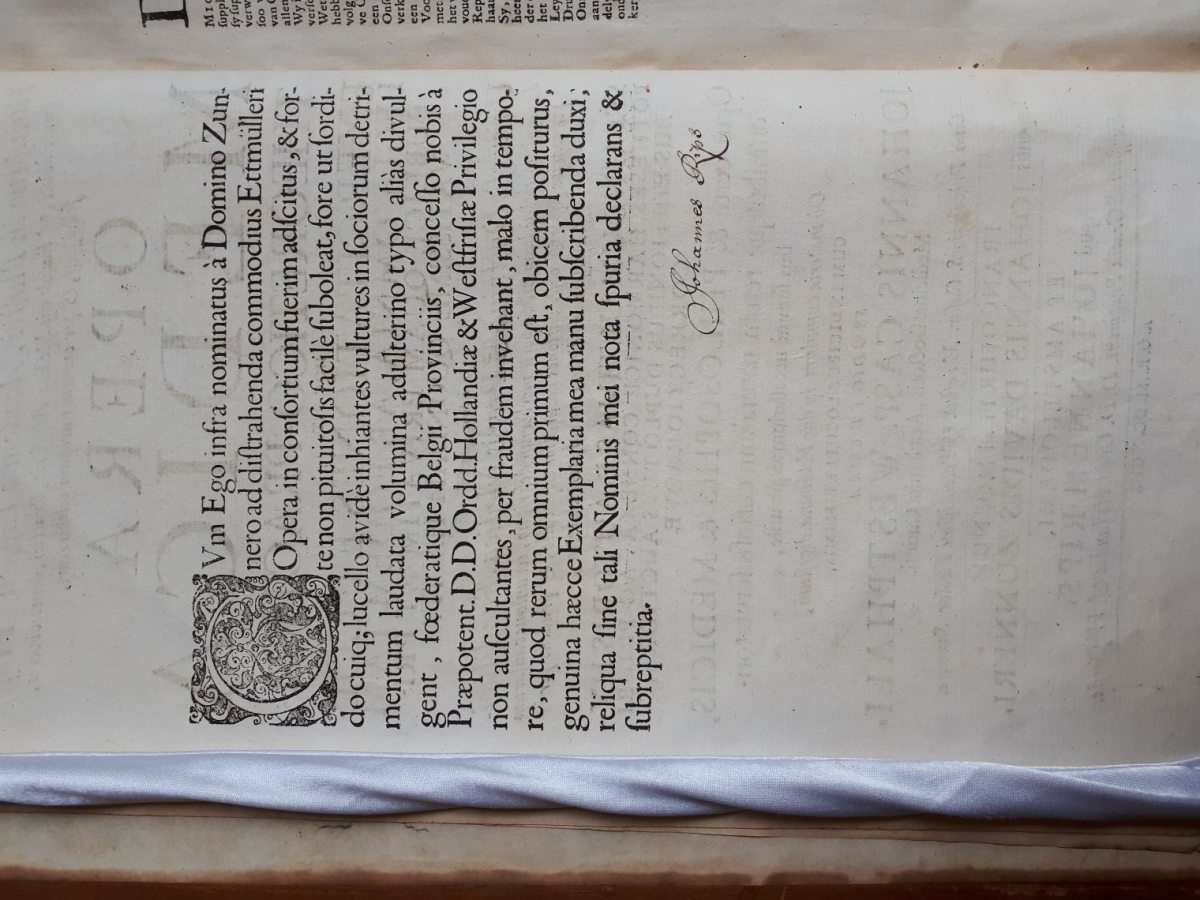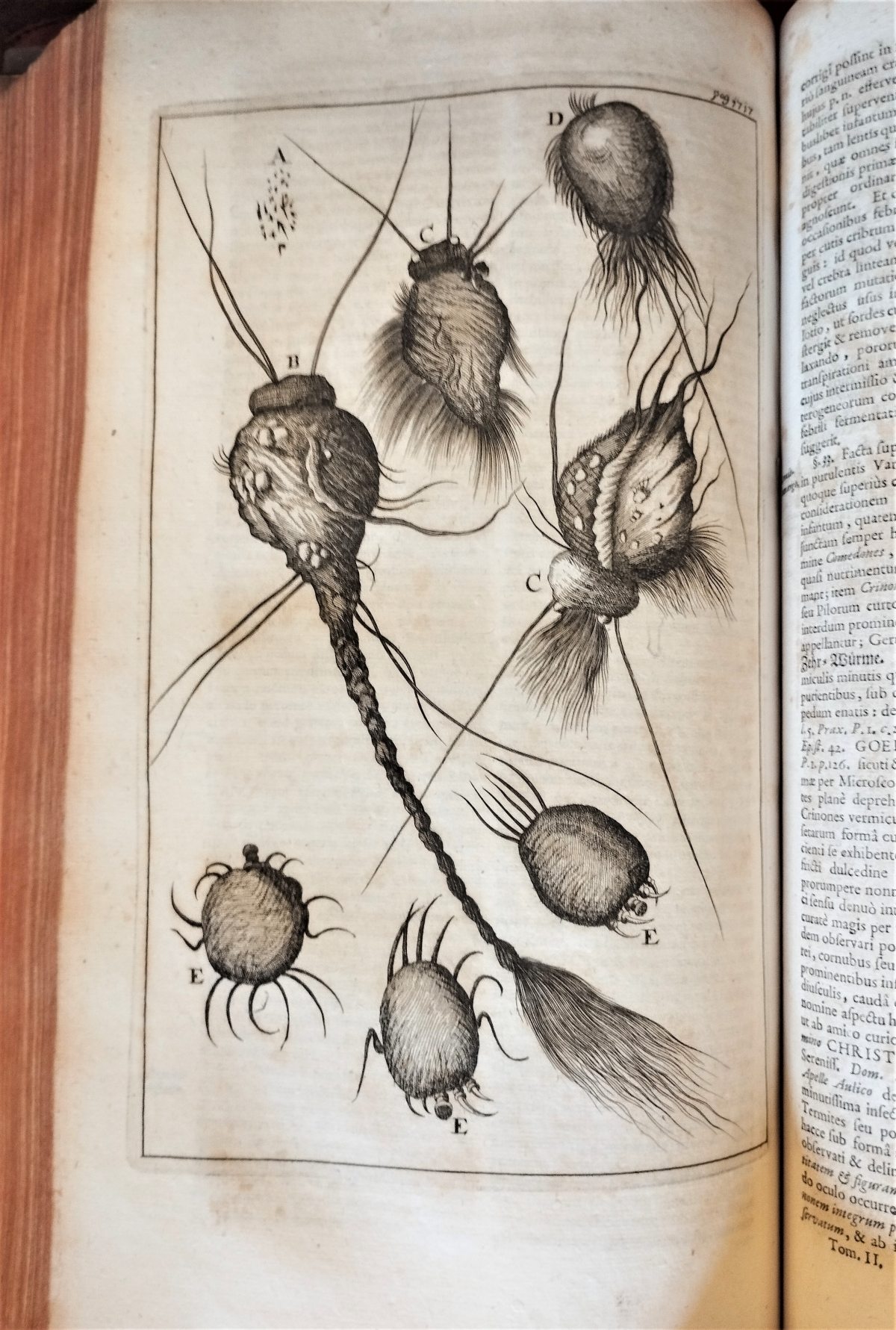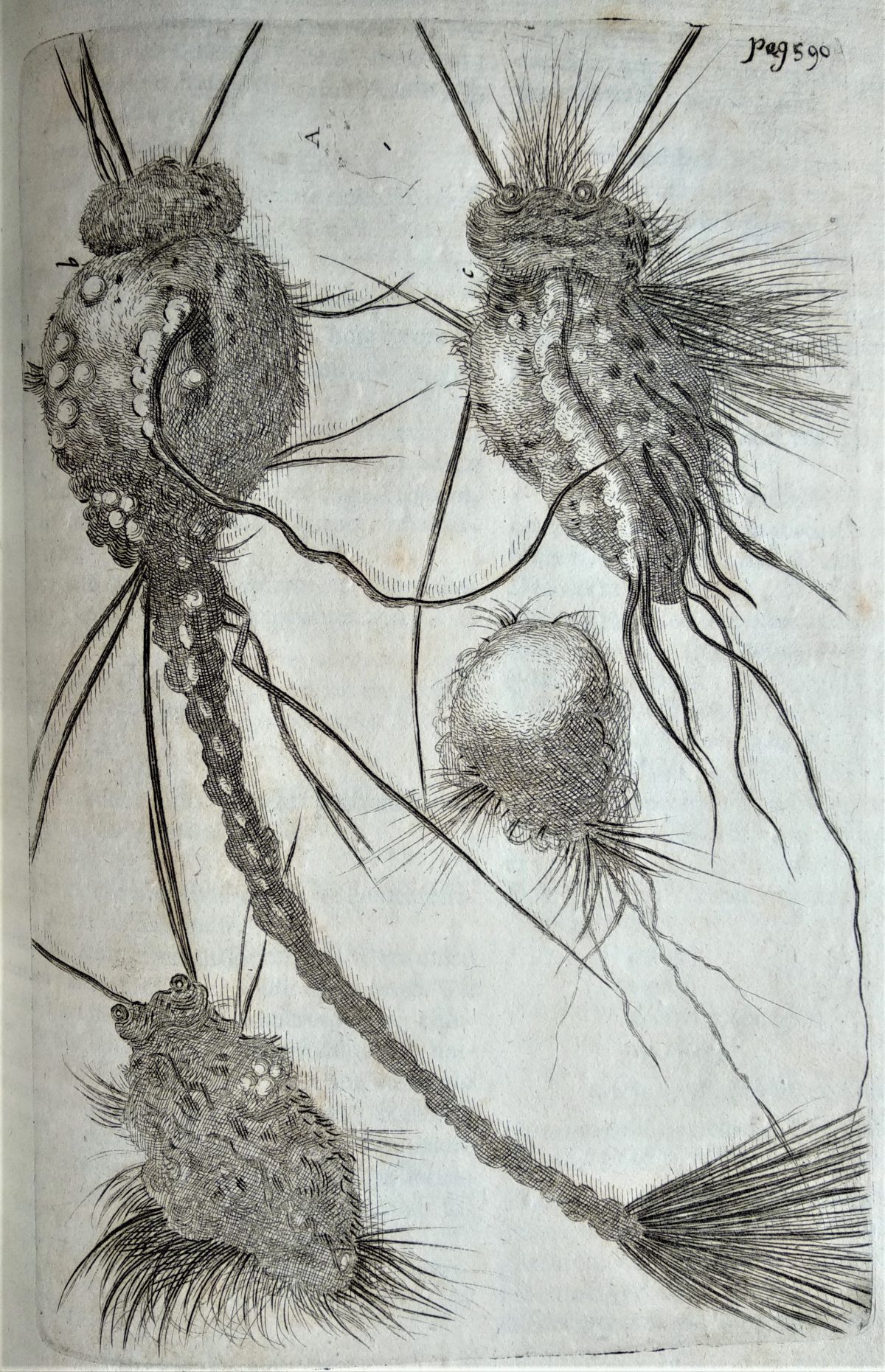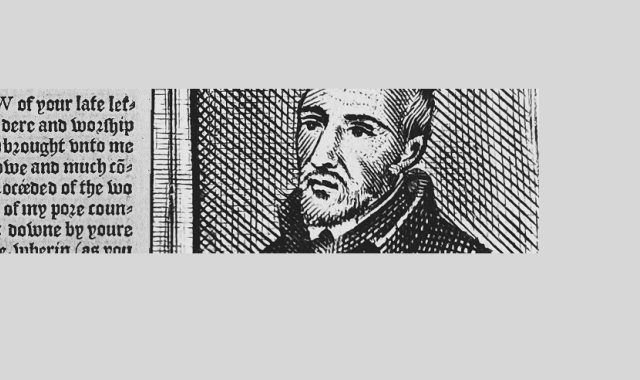Mite or mite not
Opera medica theoretico-practica (Theoretico-practical medical works), by Michael Ettmüller. Printed in Frankfurt by Johann David Zunner, and in Amsterdam by Johannes Rips, 1696–1697. Lower Library, K.7.3–5
Michael Ettmüller (1644–1683) was professor of medicine at Leipzig when he died at thirty-nine. The only publications he left were short studies, but his reputation as a teacher led to the posthumous expansion of his work from students’ notes – the Journal des sçavans for 1709 remarks that ‘a thousand mistakes … slipped in’ thereby1 – and to ten collected editions in twenty-five years.
Demand for Ettmüller’s work was such that the Amsterdam printer of this edition, Johannes Rips, took the unusual step of signing each copy by hand as a measure against spurious imitations: he writes in an accompanying printed foreword that ‘the phlegm begins to rise in [his] throat’ when he thinks of the ‘vultures’ responsible. In 1708 Ettmüller’s son Michael Ernst finally published an authoritative edition based on his father’s manuscripts, but that of Rips and his Frankfurt partner Johann David Zunner held some place. It is their edition that Michel Foucault cites in his History of Madness,2 where he makes several uses of Ettmüller’s texts.
Among the works included here is a 1682 article from the journal Acta eruditorum, on an infant skin irritation Ettmüller calls crinones, marked by protruding strong hairs. A similar condition is described occasionally in the seventeenth and eighteenth centuries, under various names: Thomas Browne in his ‘Letter to a Friend’ (of uncertain date, published 1590) calls it morgellons.3 Here, six years after Antonie van Leeuwenhoek’s pioneering observations of microorganisms, Ettmüller reports having observed with a microscope the crinones parasite. He provides illustrations of it and another, sirones: the scabies mite, observed for what seems to be the first time.
That second observation only underlines Ettmüller’s credibility, but the nature and very existence of the crinones condition were never firmly established.4 (One later suggestion is that Ettmüller saw the usually harmless demodex mite.)5 Browne’s term, morgellons, has been taken up since 2002 by the sufferers of a self-diagnosed condition of foreign fibres extruded from the skin. The current medical consensus is that this real, often severe suffering has a delusional basis.6
A new idea in circulation << Mite or mite not >> Witness to the Black Death
- Review of Opera medica theoretico-practica, by Michael Ettmüller, ed. Michael Ernst Ettmüller, Journal des sçavans (1709): 375.
- Michel Foucault, Histoire de la folie à l’âge classique (Paris: Editions Gallimard, 1972), 684.
- Thomas Browne, ‘A Letter to a Friend, upon Occasion of the Death of His Intimate Friend’, in Thomas Browne, ed. Kevin Killeen (Oxford: Oxford University Press, 2014), 719.
- C. E. Kellett, ‘Sir Thomas Browne and the Disease Called the Morgellons’, Annals of Medical History, n.s., 7 (1935): 474–479.
- Kellett, ‘Sir Thomas Browne’, 476. Kellett cites a report of a suggestion by Johann Lukas Schönlein.
- Robert E. Accordino, Danielle Engler, Iona H. Ginsburg, and John Koo, ‘Morgellons Disease?’, Dermatologic Therapy 21, no. 1 (2008): 10.


